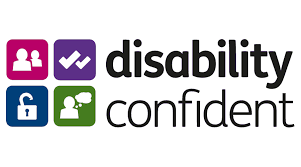Embracing Big Data to Drive Success in 2024

We are witnessing an unprecedented surge in the adoption and utilization of Big Data by organisations across industries. As we navigate the digital landscape, businesses are realizing that harnessing the power of data is key to staying competitive and achieving sustainable growth. In this data-driven era, companies are leveraging cutting-edge technologies and innovative strategies to derive actionable insights, improve decision-making processes, and optimize their operations. The impact is profound, revolutionising business models and transforming industries worldwide.
Our Senior Technical Recruiter, Jen Curran shares some fascinating trend insights about the remarkable journey companies are undertaking with Big Data:
- Enhanced Customer Experience: Companies are delving deep into customer data to understand preferences, behaviors, and sentiments. By analysing vast amounts of structured and unstructured data, businesses can personalise offerings, create tailored marketing campaigns, and deliver exceptional experiences, building long-term customer loyalty.
- Data-Driven Decision Making: Gone are the days of relying solely on intuition or limited datasets. Organisations now leverage Big Data analytics tools and platforms to make data-driven decisions at all levels. Whether it's optimising supply chains, identifying market trends, or mitigating risks, businesses are unlocking valuable insights to drive strategic planning and operational efficiency.
- Predictive Analytics & AI: The convergence of Big Data and Artificial Intelligence (AI) has unleashed a new wave of possibilities. With advanced predictive analytics, companies can forecast future trends, anticipate customer demands and proactively address challenges. AI-powered algorithms provide unparalleled accuracy, empowering organizations to make proactive, informed decisions faster than ever before.
- IoT and Connected Devices: The proliferation of Internet of Things (IoT) devices has generated an enormous volume of data. In 2023, organisations are harnessing this data to optimize processes, improve productivity, and deliver transformative products and services. From smart cities to industrial automation, the synergy between Big Data and IoT is reshaping the way we live and work.
- Data Privacy and Security: As the reliance on Big Data grows, so does the importance of safeguarding sensitive information. Companies are increasingly prioritising data privacy and security measures, ensuring compliance with evolving regulations and deploying robust cybersecurity solutions. Trust and transparency are critical for maintaining strong customer relationships.
These trends represent just a glimpse of the immense possibilities that Big Data presents. Companies that successfully navigate the complexities of data collection, analysis, and privacy will gain a competitive edge in the digital landscape of 2023 and beyond.
If you want to work within the technology industry, I highly recommend understanding the evolution of Big Data and learn how to unleash its potential for innovation and growth within a business setting. The opportunities are limitless, and as a specialise, you can shape a data-driven future that transcends one role or career pathway.
Having worked in this industry for years, I have lots of experience in guiding professionals and business on a successful pathway to sourcing and establishing successful teams. Get in touch if you'd like to know more!





